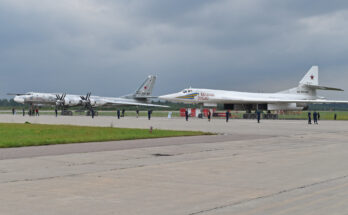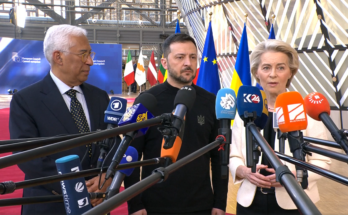
Ukrainian President Volodymyr Zelenskyy has announced the dismissal of commander-in-chief Valerii Zaluzhnyi, around a week after reports initially emerged that the general was soon to be sacked.
On Thursday in his evening address, President Zelenskyy said he met with the general and “discussed the renewal that the Armed Forces of Ukraine require,” as well as “who could be part of the renewed leadership” of the AFU. He added that he had offered for Zaluzhnyi to “remain part of the team,” though he did not identify what role the general would move into if he accepted. Zelenskyy furthermore announced Zaluzhnyi’s replacement, Colonel-General Oleksandr Syrskyi, the head of the Ground Forces.
President Zelenskyy pointed to Syrskyi’s experience in running both defensive and offensive missions, saying, “He has successful defense experience – he conducted the Kyiv defense operation. He also has a successful offensive experience – the Kharkiv liberation operation.”
Defense Minister Rustem Umerov also issued a statement praising Zaluzhnyi but confirming his dismissal as head of Ukraine’s military, a position he had held throughout the war with Russia.
“Today, a decision was made to change the leadership of the Armed Forces of Ukraine. I am sincerely grateful to Valerii Fedorovych for all his achievements and victories,” Defense Minister Umerov stated on his personal social media page.
Relations between Zelenskyy and Zaluzhnyi had become strained in recent months. The government fired a number of military recruiters in August and December as part of corruption crackdowns, prompting criticism from Zaluzhnyi. Interfax quoted him as saying of the sacked officials, “These were professionals, they knew how to do this, and they are gone.”
In November, Zaluzhnyi told The Economist that Ukrainian forces were unlikely to break through Russian lines as part of the 2023 southeastern counteroffensive. His interview – in which he described the war as approaching ‘stalemate’ – drew pushback from the government, including Zelenskyy, who rebuffed the stalemate assessment in a public statement days later.
Zelenskyy’s administration moreover threw cold water on Zaluzhnyi’s December proposal to mobilize 500,000 Ukrainians to the frontlines to account for manpower shortages. Commenting on the proposal in December, the Ukrainian president said, “Considering that it takes six Ukrainian working civilians paying taxes to pay the salary of one soldier, I would need to get 3 million more working people somewhere to be able to pay for the additional troops.”
Tension between the two culminated into Zaluzhnyi’s firing within the last two weeks. Sources told CNN that the general had been summoned to the president’s office on January 29 and informed of his dismissal.
Syrskyi, the new commander-in-chief, is taking over as the war with Russia enters its third year. Ukraine’s counteroffensive last year failed to replicate successes from 2022 and, with Western aid stalling, Russia has returned to an offensive footing in some areas of the front, rekindling operations to capture the city of Avdiivka, near Donetsk. The fight to control the city has drawn comparisons with Bakhmut, which Russia captured in 2023 after a grueling battle that cost both sides significant numbers of troops and hardware. Syrskyi, who commanded Bakhmut’s defense, drew criticism for not withdrawing from the town sooner, though he argued that it bogged down Russia’s military, including the paramilitary group Wagner, whose fighters took immense casualties.
Military markets analyst, covering Eurasia, Middle East, and Africa.




